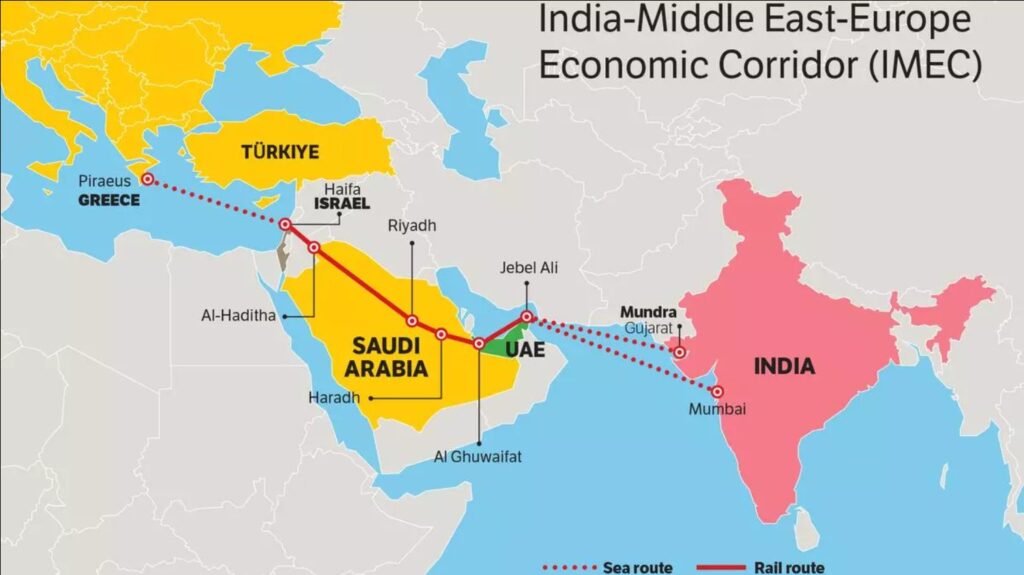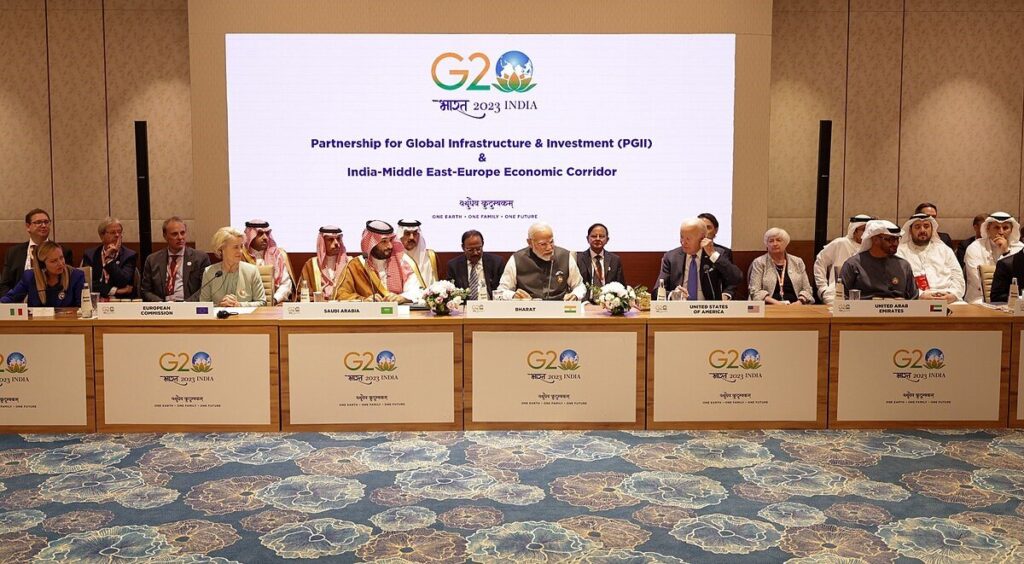The Union Cabinet granted ex-post facto approval to the Inter-Governmental Framework Agreement (IGFA) signed recently, highlighting the significance of the India-Middle East Europe Economic Corridor (IMEC).
- Agreement was inked during the High-Level visit between the Government of the Republic of India and the Government of the United Arab Emirates.
About Inter-Governmental Framework Agreement (IGFA):
- The agreement focuses on cooperation for the empowerment and operation of the India-Middle East Europe Economic Corridor (IMEC).
- The aim of the IGFA is to enhance the bilateral relations and to further strengthen the relations between the two countries in the Ports, Maritime and Logistics sectors.
- IGFA includes areas of cooperation with the objective of exploring the further potential of future joint investment and collaboration with respect to the development of the IMEC.
- The Agreement outlines a comprehensive framework for cooperation between the two countries, which will be guided by a set of mutually agreed principles, guidelines, and agreements.
About India-Middle East Europe Economic Corridor (IMEC):

- The IMEC is a planned economic corridor that aims to enhance economic development by fostering connectivity and economic integration between Asia, Middle East and Europe.
- Memorandum of understanding was signed between the European Union and seven countries, namely India, the US, Saudi Arabia, the United Arab Emirates (UAE), France, Germany, and Italy at New Delhi G20 summit to establish it.
- The corridor is proposed from India to Europe through the United Arab Emirates, Saudi Arabia, Jordan, Israel and Greece.
- It will comprise of two separate corridors, the east corridor connecting India to the Gulf and northern corridor connecting Gulf to Europe.
- It will provide reliable and cost-effective cross-border ship to rail transit network to supplement existing maritime routes.
- It will comprise a shipping route linking Mumbai and Mundra (Gujarat) with the UAE, along with a rail network connecting the UAE, Saudi Arabia, and Jordan to the Israeli port of Haifa, providing access to the Mediterranean Sea.
- From Haifa, there will be a sea route to the port of Piraeus in Greece, ultimately linking to Europe.
Significance:
- It intends to increase efficiency, reduce costs, secure regional supply chains, increase trade accessibility, enhance economic cooperation, generate jobs and lower greenhouse gas emission, resulting in a transformative integration of Asia, Europe and the Middle East.
- The combined GDP of IMEC nations accounts for ~40% of the world’s total GDP.
- It is perceived as a response to China’s Belt and Road Initiative, aiming to provide an alternative connectivity framework in the region.
- The corridor aims to expedite trade between India and Europe while facilitating India’s strategic engagement with the Arab world.
Challenges:
- It is causing tension between two major Mediterranean powers– Greece and Türkiye.
- Sea route for this corridor between Haifa and Piraeus passes through disputed waters.
- The Hamas attacks and the ongoing Israeli assault on Gaza present challenge to the IMEC.
- A key element of IMEC is the Greek port of Piraeus, Eastern Europe’s largest port, which will receive cargo from Israel’s Haifa port.
- Since 2016, the majority stake in Piraeus has been held by the Chinese shipping company Cosco, granting it considerable control over the port’s operations.
- No feasibility studies conducted for clean hydrogen pipelines or high-speed digital cables.
Ref:Source
| UPSC IAS Preparation Resources | |
| Current Affairs Analysis | Topperspedia |
| GS Shots | Simply Explained |
| Daily Flash Cards | Daily Quiz |



